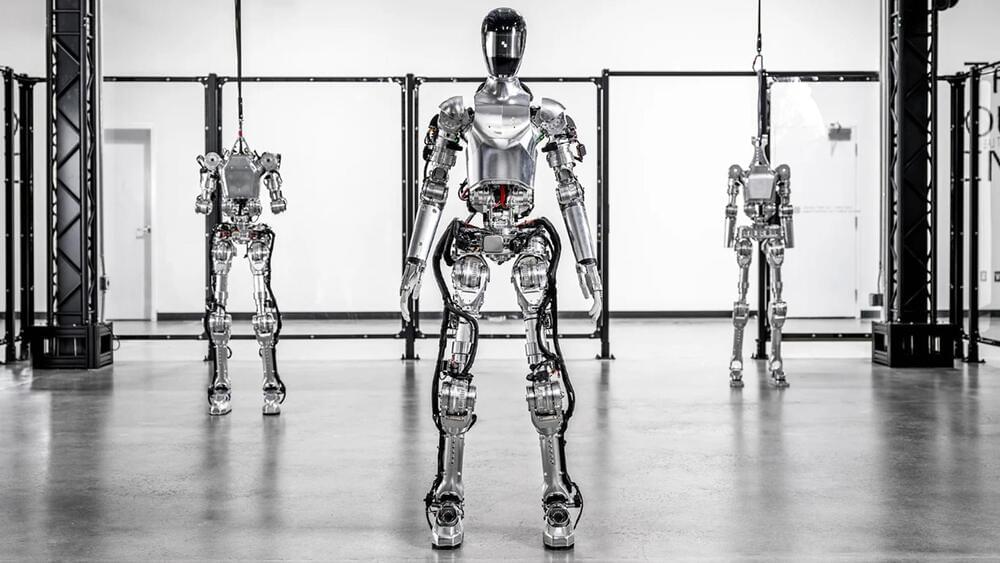Feb 28, 2024
Wearable Digital Health Technology for Epilepsy
Posted by Shubham Ghosh Roy in categories: biotech/medical, health, wearables
Review Article from The New England Journal of Medicine — Wearable Digital Health Technology for Epilepsy.
Review Article from The New England Journal of Medicine — Wearable Digital Health Technology for Epilepsy.
The brain is typically depicted as a complex web of neurons sending and receiving messages. But neurons only make up half of the human brain. The other half—roughly 85 billion cells—are non-neuronal cells called glia.
The most common type of glial cells are astrocytes, which are important for supporting neuronal health and activity. Despite this, most existing laboratory models of the human brain fail to include astrocytes at sufficient levels or at all, which limits the models’ utility for studying brain health and disease.
Now, Salk scientists have created a novel organoid model of the human brain—a three-dimensional collection of cells that mimics features of human tissues—that contains mature, functional astrocytes. With this astrocyte-rich model, researchers will be able to study inflammation and stress in aging and diseases like Alzheimer’s with greater clarity and depth than ever before.

Just days after Elon Musk shared the progress of Tesla’s Optimus robot, Figure AI has released an image of its own humanoid robot at work.
Called “Figure 01,” this humanoid robot is seen being put to work in a warehouse.
Continue reading “Future AI’s Figure 01 seen at work in a warehouse rivaling Optimus” »
As other automakers fret over demand, Hyundai Motor Group is ahead of schedule on its Savannah, Georgia EV factory.
“They are the GPU cartel and they control all supply” Scott Herkelman, former AMD Radeon chief, has something to say about NVIDIA practices. Scott Herkelman & Jensen Huang, Source: AMD/NVIDIA According to the article on Wall Street Journal (via Tom’s Hardware), NVIDIA might be delaying data center GPU orders if customers start eyeing other options. […].
Collisions of heavy ions briefly produced a magnetic field times stronger than Earth’s, and it left observable effects.
Researchers reveal how water striders survive collisions with raindrops that are much larger than the insects—a result that could help in understanding how microplastics are transported in water.
A proposed recipe for quantum error correction removes the need for time-consuming measurements of qubits, replacing them with copying and feedback steps instead.
New theoretical work establishes an analogy between systems that are dynamically frustrated, such as glasses, and thermodynamic systems whose members have conflicting goals, such as predator–prey ecosystems.
A system is geometrically frustrated when its members cannot find a configuration that simultaneously minimizes all their interaction energies, as is the case for a two-dimensional antiferromagnet on a triangular lattice. A nonreciprocal system is one whose members have conflicting, asymmetric goals, as exemplified by an ecosystem of predators and prey. New work by Ryo Hanai of Kyoto University, Japan, has identified a powerful mathematical analogy between those two types of dynamical systems [1]. Nonreciprocity alters collective behavior, yet its technological potential is largely untapped. The new link to geometrical frustration will open new prospects for applications.
To appreciate Hanai’s feat, consider how different geometric frustration and nonreciprocity appear at first. Frustration defies the approach that physics students are taught in their introductory classes, based on looking at the world through Hamiltonian dynamics. In this approach, energy is to be minimized and states of matter characterized by their degree of order. Some of the most notable accomplishments in statistical physics have entailed describing changes between states—that is, phase transitions. Glasses challenge that framework. These are systems whose interactions are so spatially frustrated that they cannot find an equilibrium spatial order. But they can find an order that’s “frozen” in time. Even at a nonzero temperature, everything is stuck—and not just in one state. Many different configurations coexist whose energies are nearly the same.
